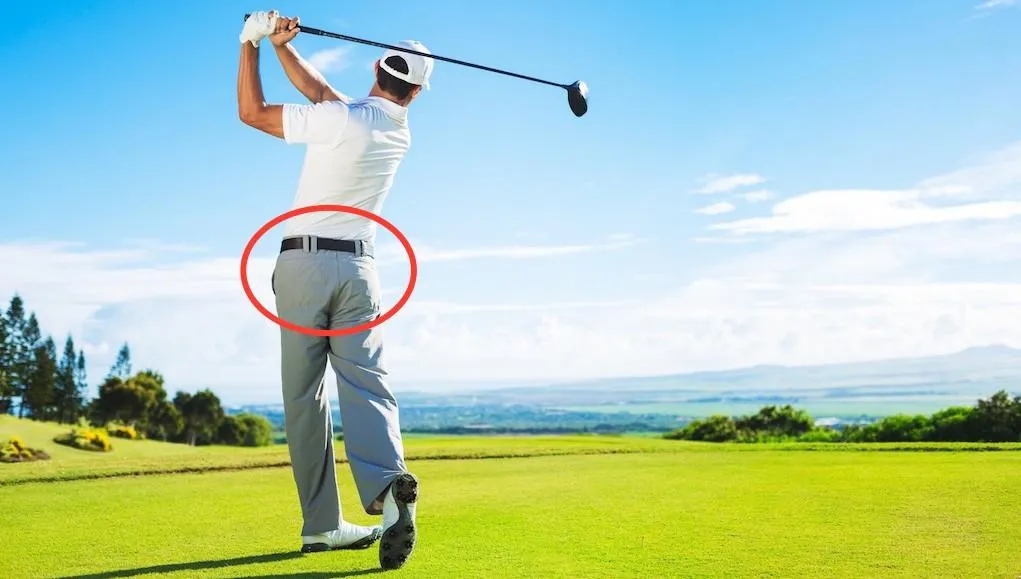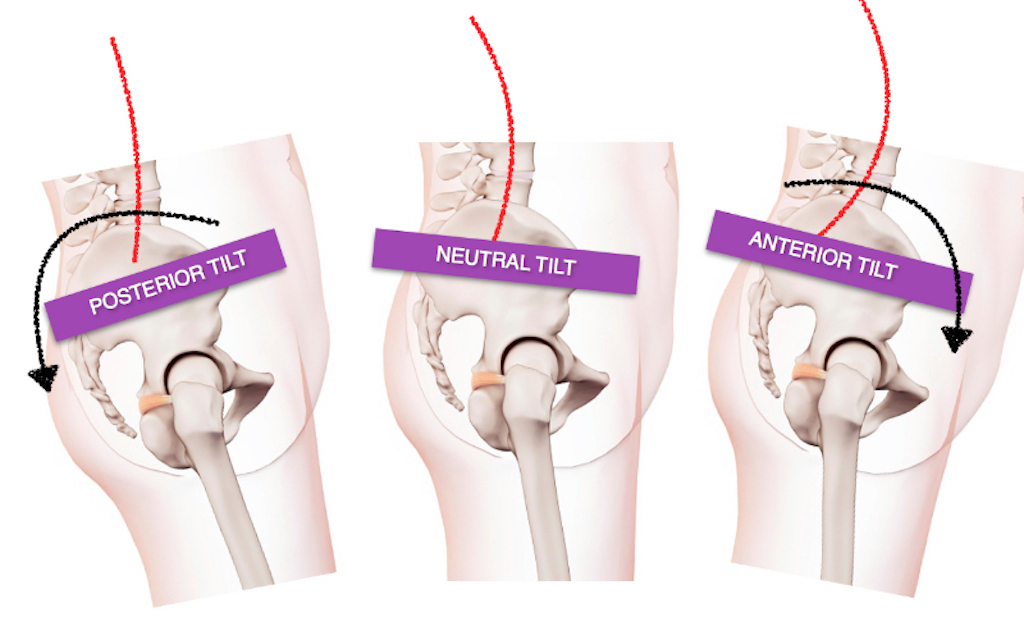
Distance: Pelvis in Control | The Key to Unleashing Distance
Mastering Pelvic Power in Golf: The Key to Unleashing Distance
Achieving greater distance in golf is a common ambition among players, and the secret to unlocking this potential lies in the effective use of the pelvis. At EJS Golf Academy in Scottsdale, AZ, coach Erik Schjolberg has perfected the art of harnessing pelvic power to significantly enhance driving distance. In this comprehensive guide, we will delve into the biomechanics of pelvic movement and its profound impact on your golf game.

The Biomechanical Advantage of Pelvic Movement
The pelvis is the cornerstone of power and stability in the golf swing. Biomechanical studies show that professional golfers utilize their pelvis to generate speeds exceeding 720 degrees per second in rotational velocity, contributing to drives that can reach 300 yards or more. The pelvic thrust, a key component of the downswing, is found to increase clubhead speed by up to 15%, highlighting the pelvis's role in distance enhancement.
1. Perfecting Pelvic Rotation: A Path to Power
Dynamic Setup: Begin with a posture that promotes pelvic mobility. Align your feet, knees, and hips to foster a fluid rotational movement.
Efficient Backswing: Initiate the backswing with a controlled rotation feeling a spiraling motion as your rib cage eventually pulls along your pelvis for rotation. General guidelines are aiming for a 45-degree turn away from the target. This coiling of the pelvis stores elastic energy, crucial for a powerful downswing.
Explosive Downswing: Unleash the stored energy by rotating the pelvis towards the target rapidly. This is that crucial movement where so much goes wrong. This is where i see golfers just spinning out. Learn to use GRF's (ground reaction forces) to create that powerful pelvis rotation!
2. Stability and Strength: The Pelvic Foundation
Core Conditioning: Strengthening the core muscles is vital for a stable and robust pelvic motion. Engage in exercises like planks and rotational squats to build a solid foundation.
Pelvic Balance: Maintain a balanced pelvic tilt throughout the swing. An optimal tilt reduces the risk of lower back injuries and enhances force transmission to the ball.
3. Synchronizing the Swing: Pelvic Integration
Kinematic Sequence Mastery: A seamless kinematic sequence ensures that the pelvic motion is harmoniously integrated with the torso, arms, and club movements, optimizing the transfer of kinetic energy.
Technology-Driven Improvement: At EJS Golf Academy, we employ advanced tools like Trackman 4 and 3D Pressure Plates to analyze and refine your pelvic mechanics, ensuring every swing is power-optimized.
4. Training Techniques for Pelvic Power
Drill for Skill: Incorporate drills that focus on isolating and enhancing pelvic rotation. For example, the 'hip twister' drill emphasizes the rapid rotation of the pelvis to mimic the golf swing's dynamic movement.
Feedback and Progress Tracking: Regular assessments with biomechanical analysis tools provide insights into your pelvic motion's efficiency, guiding targeted improvements and tracking progress over time.

Harnessing the power of the pelvis in golf is more than a technique—it's a transformation in how you approach your game. At EJS Golf Academy, we specialize in unlocking this potential, offering personalized coaching backed by cutting-edge technology. Visit our website at EJS Golf to discover how we can help you extend your drive and refine your game.
Hashtags for Social Media #EJSGolf #ScottsdaleGolfLessons #OnlineGolfLessons #GolfSwingPower #PelvisInGolf #DriveDistance #GolfInstruction #BestGolfInstructorAZ #GolfTips #GolfFitness #PowerGolf #GolfBiomechanics
By integrating a robust pelvic motion into your golf swing, you can achieve not just longer drives but also a more efficient and consistent game. Partner with EJS Golf Academy, and let's embark on a journey to unleash your full golfing potential.
Closer Look at the Pelvis

Transforming Your Game: The Pelvis Power Success Story at EJS Golf Academy
At EJS Golf Academy in Scottsdale, AZ, we pride ourselves on enhancing our students' golfing performance through targeted biomechanical improvements. One of the most significant breakthroughs we've observed is the remarkable increase in driving distance achieved through optimizing pelvic movement. Let's delve into a compelling case study of how our coaching philosophy, centered around pelvic mechanics, revolutionized the game for one of our students, whom we'll call "Alex."
Alex's Journey: From Average to Exceptional Alex, a dedicated golfer with aspirations of lowering his handicap, struggled with inconsistent and short drives. When he first came to EJS Golf Academy, his average drive was around 220 yards, lacking both power and accuracy. Our initial assessment using the Trackman 4 Launch monitor and 3D Pressure Plates revealed that Alex's pelvic motion during his swing was inefficient, leading to suboptimal energy transfer and reduced swing speed.
The Diagnostic Phase Through comprehensive biomechanical analysis, we discovered that Alex's pelvic tilt and rotation were not synchronized with the rest of his swing. His pelvis was under-rotating in the backswing and over-rotating in the downswing, causing a loss of power and control. This misalignment not only reduced his driving distance but also increased the risk of injury.
The Intervention: Pelvic Power Program We designed a personalized Pelvic Power Program for Alex, focusing on enhancing his pelvic mechanics. The program included:
Pelvic Rotation Drills:
To improve his backswing and downswing, we implemented specific drills that encouraged a controlled and powerful rotation of the pelvis.
1. Seated Rotation Drill: Sit on a chair with your legs apart, mimicking your golf stance. Hold a golf club across your chest with both hands, ensuring that it's parallel to the ground. Rotate your upper body to the right and left, focusing on moving your pelvis. This drill helps in isolating and strengthening your pelvic rotation without the influence of your leg movement.
2. Step Change Drill: Start in your regular golf stance. As you initiate your backswing, step back with your lead foot, then step forward into your original stance as you swing through. This drill encourages a dynamic hip turn and improves the sequence of your pelvic rotation.
3. Pelvic Tilt Drill: Stand straight and practice tilting your pelvis forward and backward. This movement is crucial for maintaining proper posture and spine angle during the swing. It also enhances your ability to rotate your pelvis efficiently during the swing.
4. Resistance Band Rotation: Attach a resistance band to a fixed point at waist height. Stand perpendicular to the band's anchor point with the band around your waist. Rotate your pelvis away from the anchor point, resisting the tension of the band, then control the return movement. This drill builds strength and stability in your pelvic muscles.
Strength and Conditioning: Alex engaged in targeted exercises to strengthen his core and gluteal muscles, crucial for stabilizing and powering the pelvic movement. My TPI is an incredible source to find exercises and stretches.
Real-time Feedback Training: Using 3D video analysis, we provided Alex with instant feedback, allowing him to understand and visualize the optimal pelvic motion during his swing. Visualization can make all the difference with some students.
The Transformation Over several weeks, Alex's dedication to the Pelvic Power Program began to show significant results. His pelvic rotation became more synchronized with his overall swing, leading to a more efficient and powerful kinetic chain activation. This improvement was evident in his increased clubhead speed, which directly translated to longer drives.
In golf, kinetic chain activation refers to the efficient sequence and utilization of different body parts to produce maximum power and control during the golf swing. This concept is rooted in the principle that an effective golf swing is not just about the arms or the club, but involves the entire body moving in a coordinated and sequential manner.
The kinetic chain typically starts from the ground up. It begins with the feet planted firmly on the ground, then moves up through the legs, hips, torso, shoulders, arms, and finally to the club. Each segment of the body accelerates and then decelerates in a precise order, transferring energy smoothly from one segment to the next.
Ground Force Reaction: It starts with the legs leveraging against the ground to generate force. This is where ground reaction forces (GRFs) play a crucial role, as the golfer pushes against the ground to initiate movement upwards through the body.
Hip Rotation: The hips then rotate, creating a separation between the lower and upper body. This separation is key to building torque and elastic energy.
Torque and Transfer: The torso and shoulders follow, uncoiling and transferring the built-up energy towards the arms.
Arm and Club Movement: Finally, the arms deliver the energy to the club, which is swung with speed to hit the ball.

Effective kinetic chain activation is crucial for optimizing power and control, reducing the risk of injury, and improving overall swing efficiency. When each part of the chain functions properly and in the correct sequence, the golfer can achieve a powerful, accurate, and consistent swing.
The Results: A Game-Changing Improvement After three months of intensive training and practice, Alex's driving distance increased dramatically. His average drive went from 240 yards to over 280 yards, a remarkable gain of 40 yards. But the benefits extended beyond just distance. His drives became more accurate and consistent, contributing to better scores and a reduced handicap.
The Continued Journey Encouraged by his progress, Alex continued to refine his swing mechanics at EJS Golf Academy. Regular follow-ups and adjustments ensured that his pelvic movement remained efficient and powerful. Alex's success story became a testament to the potential of focused training and its impact on golf performance.
Conclusion Alex's journey from an average golfer to one with exceptional driving distance exemplifies the transformative power of effective pelvic mechanics in golf. At EJS Golf Academy, we are committed to unlocking each golfer's potential by focusing on the foundational elements of the swing, like the pelvis, to achieve lasting improvements. Alex's story is just one of many successes we've celebrated, and it reinforces our belief in the effectiveness of our coaching approach.
Alex's experience highlights the critical role of the pelvis in generating power and efficiency in the golf swing. At EJS Golf Academy, we don't just teach golf; we transform it, utilizing cutting-edge technology and personalized coaching to ensure every golfer achieves their maximum potential. Join us, and let's unlock the power of your pelvis for game-changing distance and precision.
In the relentless pursuit of more yards off the tee, golfers often overlook a fundamental element that could revolutionize their game: pelvic control. While the golf industry is saturated with equipment promising to increase your distance, the secret to unlocking your true potential might lie within the mechanics of your own body, particularly the pelvis.
Movement of the Pelvis

